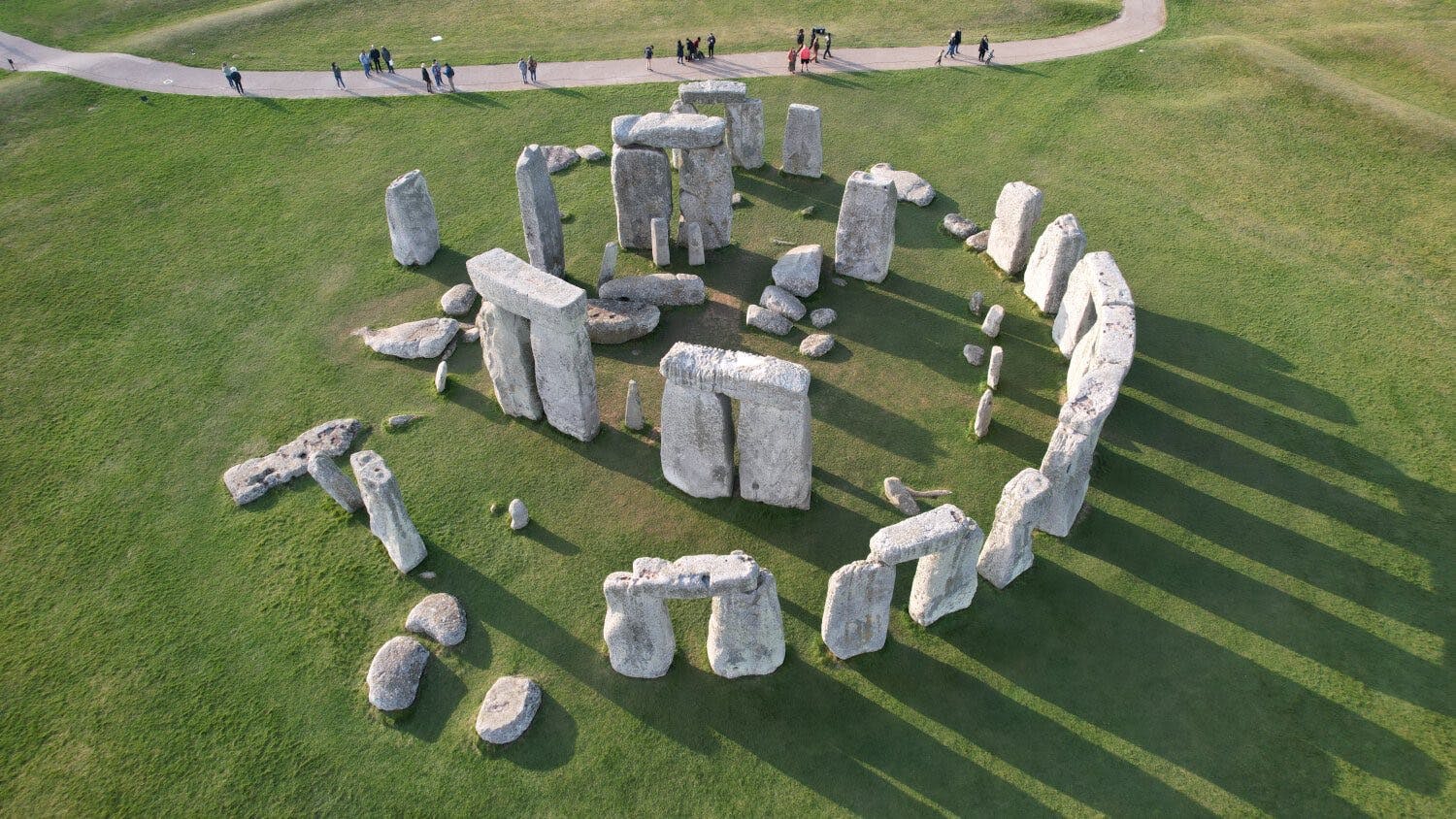The geological secrets of Stonehenge

Many geologists and archaeologists have dedicated their careers to understanding this place, yet Stonehenge still refuses to yield all its secrets – although geology has helped uncover a few.
Before we dive into the mysteries, here are some things we do know about Stonehenge.
A UNESCO World Heritage site since 1986, the earliest monument at Stonehenge dates from about 5,000 years ago, with the earliest stone circle erected around 2500 BC. Two types of rock were used to construct the stone henge: Wiltshire sarsen sandstone and Pembroke bluestone.
The average sarsen weighs 25 tons. The largest, the Heel Stone, weighs in at around 30 tons. The tallest is 8.71 metres tall, including the 2.13 metres buried underground. The bluestones travelled 150 miles (240km) from the Preseli Hills in southwest Wales to Stonehenge.
Thanks to recent testing on a core sample extracted from one of Stonehenge’s 52 sarsens in the 1950s and only made available for research in 2018, we know these stones are so durable and strong because they are what geologists call silcretes – a natural rock made of tiny quartz grains held together by a cement of tightly interlocking mosaic of quartz crystals. Quartz is highly weather resistant.
A new geochemical approach to discovering the source of these stones confirms what many already suspected – that they came from the Marlborough Downs, 20 miles (32km) away. The method even pinpointed the exact area the stones came from: West Woods.
That’s all fascinating but, as well as the unforgettable sight of those remarkable rocks standing tall in the timeless landscape, what keeps us taking geology tours to Stonehenge is the site’s enduring sense of mystery. Here are five secrets that, despite the most recent technological and scientific advances, Stonehenge continues to keep.

1. Were the rocks recycled from an earlier stone henge?
It’s common knowledge that the rocks of Stonehenge were hewn in Wales, but recent research suggests they may have started life as part of an even older stone circle in West Wales. In 2017 and 2018, a team led by Mike Parker Pearson excavating a site at Waun Mawn in Pembrokeshire’s Preseli Hills – close to Stonehenge’s bluestone quarries – found evidence of a dismantled stone circle that once contained stones of the same sizes and shapes as some of those at Stonehenge. And like Stonehenge, the Waun Mawn circle appears to have been oriented towards the summer solstice.
The proposal is disputed, but if true it does lend credence to a 900-year-old legend that claims Stonehenge was built from an earlier stone circle. It’s also supported by evidence that people and animals migrated from Wales to Stonehenge.
2. If the rocks were recycled, how many stone circles were used? (And are we completely sure of the date?)
Mike Parker Pearson was also part of the Stonehenge Riverside Project, which found that Stonehenge was built around 500 years earlier than previously thought. The same project also discovered Bluestonehenge, a stone circle monument thought to date from 3400-2500 BC, about 1 mile (1.6km) southeast of Stonehenge.
Bluestonehenge is extra interesting because imprints from the bases of the stones there match the dimensions of the bluestones in Stonehenge. The date of 2500 BC coincides with a time of major alterations at Stonehenge; Parker Pearson suspects the bluestones from Bluestonehenge were incorporated into Stonehenge.
3. Speaking of alterations…
Stonehenge hasn’t always looked the same. It was actually built in five phases, between 3000 and 1500 BC. The bluestones were significantly rearranged during that time. We don’t know exactly why or how.
4. How did the bluestones get to Stonehenge?
How the bluestones reached Stonehenge from Pembrokeshire is still one of the biggest questions in British archaeology. Did ice carry them slowly across the land? Or were they transported there purposefully by immense human effort? If the latter, it’s probable that a good chunk of the journey was by boat.
5. Why was Stonehenge built?
Most enthralling of all, we still don’t know exactly what Stonehenge was built for, although there are several theories. Many presume it was constructed as a religious site, and to show off the power of the wealthy folk who built it. After all, the surrounding area includes the densest concentration of burial mounds in Britain, many of which contain the remains of people thought to have been chieftains, aristocrats and priests.
The stones are aligned to the sun so perhaps Stonehenge was for predicting lunar and solar eclipses, for marking the winter and summer solstices, or to support the farming calendar. Was it a monument to the world of ancestors? Or was it simply a seasonal gathering place?
Intrigued? Experience these amazing stones and their stories on our next geology and cultural tours: London, Stonehenge, Bath and Jurassic Coast: A short geo-culture tour of Southern England. We’re running six-day and four-day-long geology holidays from London this September.
